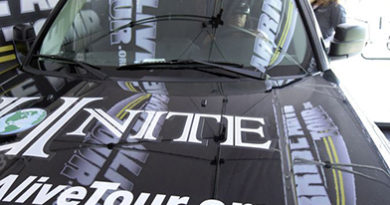Distracted Driving: Wearable Technology Increases The Risks
There are many factors that play into distracted driving. It could be our cell phones or our infotainment systems in the dashboard. Now it is confirmed that wearable technology increases the risk of driving distracted! A new study shows us these details and they seem to be shocking many people.

Distracted Driving Study
The study was done by Murtuza Jadliwala, assistant professor of computer science at The University of Texas at San Antonio. During the study, they examined wearable technology, like your FitBit, Apple Watch or Google Glass, and it’s affect on drivers’ concentration. Jadliwala and his collaborators determined that a driver texting with a wearable device can marginally reduce their level of distraction. However, it still makes texting while driving just as dangerous as if you were using an actual cell phone.
Rajendra Boppana, chair of the UTSA Department of Computer Science, said, “Dr. Jadliwala’s research on evaluating the influence of technology on consumer safety and privacy is timely and significant. His work on wearable technologies is a great example of impactful research driven by experiments, an approach highly valued by computer scientists.”
Distracted Driving Facts
Distracted driving is a major issue in this country. More than a quarter of car accidents reported each year are attributed to some form of distracted driving. Every day, nine people die in the U.S. from distracted driving. Also, 330,000 injuries occur each year because of texting while driving. This also is the most common cause of death in teenagers.
The Findings
The collaborators of this study created a safe environment where distracted driving was measured. Jadliwala said, “We recruited about 20 volunteers on a university campus. They used a driving simulator in a laboratory that included a three-screen display, a wheel and pedals.”
The volunteers used the simulator and were put to the task of using a smart phone or Google Glass. During the simulation, the volunteers were sent text messages and had to reply to them while trying to drive safely. The simulator would record the deviations in the steering wheel and whether the volunteers drifted out of their lane.
How Wearable Technology is Impacting our Lives#DigitalHealth #Wearables #IoT #WearableTech
➡️https://t.co/tEIS3nfKgT pic.twitter.com/mvd2nk1cUd— Digital Doctor (@DigitalDoctorNL) April 22, 2018
Jadliwala said, “We found that the Google Glass distracts the driver slightly less, but that also gave the participants a false sense of safety.”
With the wearable device, participants could respond quicker and use voice-activated controls. They noticed the increased efficiency, but they were more likely to engage with the device. Because of this, it negated the small safety difference between the smart phone and the wearable device.
Basically, the wearable devices tend to be quicker and easier to respond on, so it gives some kind of safety advantage. However, that encourages the driver to use it more than they would use their cell phone, which is a bad thing. In the end, just don’t text and drive!




You must log in to post a comment.